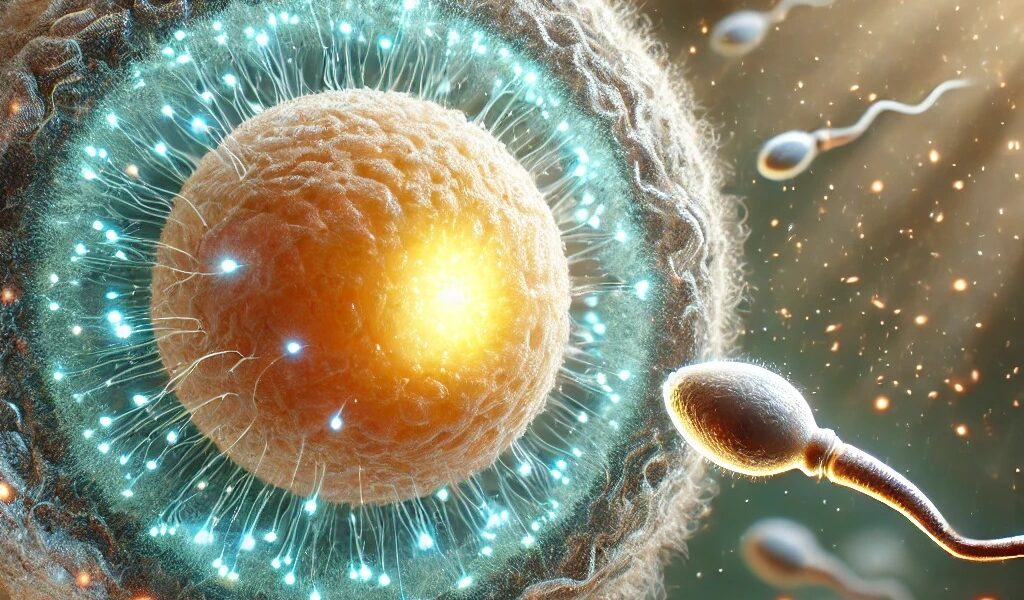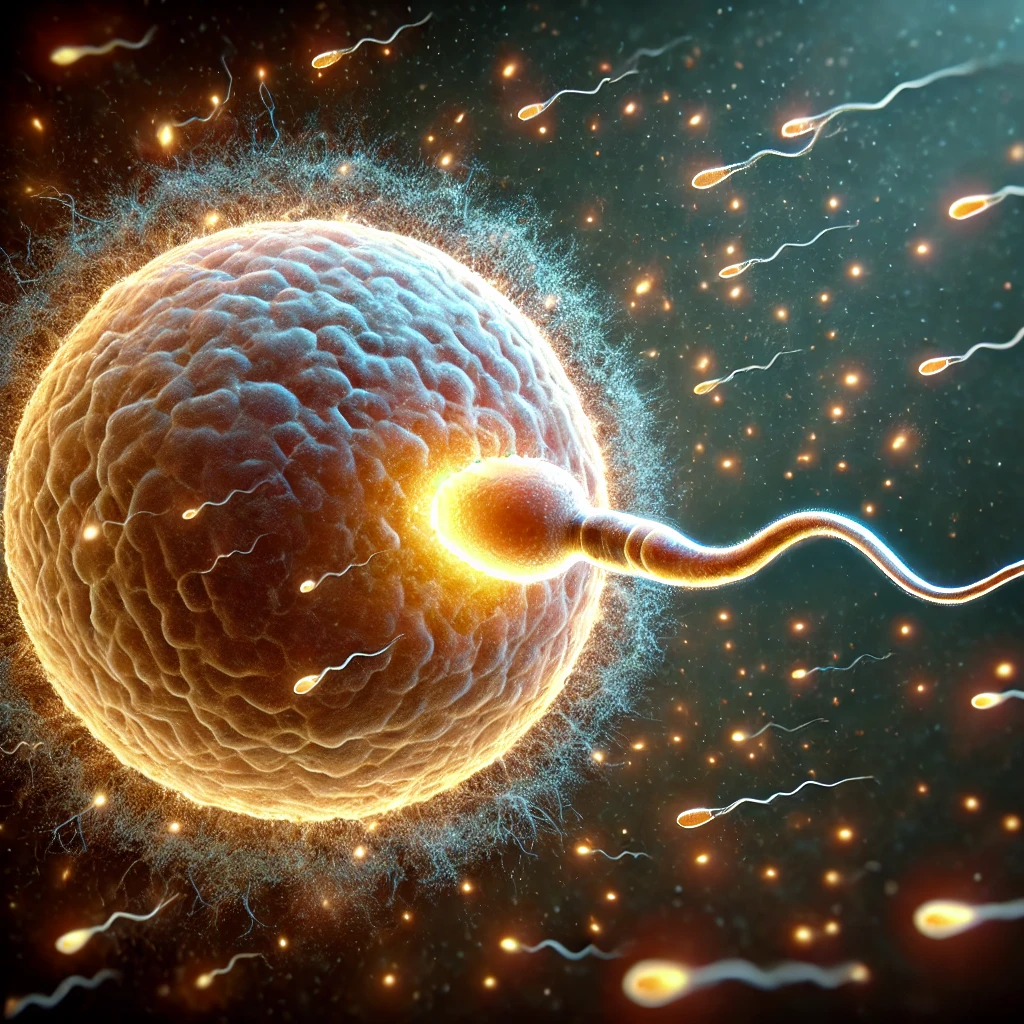Contents
- 1 Illuminating the Miracle of Conception
- 2 Prof. Aécio D’Silva, Ph.D AquaUniversity
- 3 A Tiny Flash, A Grand Beginning
- 4 Summary
- 5
- 6 The Fascinating Science Behind Zinc Sparks – Spark of Life
- 7 What Causes These Zinc Sparks?
- 8 Ethical Considerations and Future Research of Spark of Life
- 9
- 10 Conclusion: Spark of Life – A Brilliant Beginning
Illuminating the Miracle of Conception
Prof. Aécio D’Silva, Ph.D
AquaUniversity
A Tiny Flash, A Grand Beginning
Imagine a microscopic burst of light marking the beginning of human life. This isn’t science fiction—it’s an Intelligent Design real phenomenon observed by our colleagues scientists during fertilization. These “zinc sparks” could hold the key to understanding the earliest moments of human development and even improving fertility treatments.
Summary
Spark of Life – Recent scientific discoveries have revealed that when a sperm fertilizes a human egg, a burst of light—caused by zinc particles—is emitted. This remarkable event has profound implications for reproductive medicine and offers fascinating insights into the biology of conception. This blog will explore the science behind these light emissions, their role in fertilization, and their potential applications in medicine.
The Fascinating Science Behind Zinc Sparks – Spark of Life
For decades, fertilization has been known as the moment when sperm meets egg, but new research has unveiled a visually striking event: a small but significant release of energy in the form of light. These sparks result from zinc ions being expelled from the egg’s surface upon fertilization, interacting with molecules in the surrounding environment. This reminds me of Genesis 1: 3-4 in the Bible which says: And God said, “Let there be light,” and there was light. God saw that the light was good, and he separated the light from the darkness.
Genetic researchers know Zinc plays a crucial role in egg maturation and fertilization. Scientists have found that eggs store vast amounts of zinc, and when fertilization occurs, a surge of zinc ions is released, triggering a reaction that produces brief flashes of light. This reaction is not just a beautiful spectacle, it is a biological marker of a successfully activated egg.
What Causes These Zinc Sparks?
At the cellular level, zinc is essential for egg development. When a sperm successfully penetrates the egg’s outer layer, it triggers a cascade of biochemical reactions, leading to the sudden release of zinc ions. These ions bind to small molecules in the extracellular environment, causing fluorescence, which appears as a burst of light under a microscope.
This discovery was made through advanced imaging techniques that allow scientists to visualize these zinc sparks in real time. The intensity and frequency of these sparks may even indicate the health and viability of an egg, making them a potential tool for assessing embryo quality in fertility treatments.
Why Are Zinc Sparks Important?
Beyond their visual impact, zinc sparks are an essential biological process. They help prevent multiple sperm from fertilizing the same egg, ensuring a single, healthy embryo can develop. This process, known as the “cortical reaction,” reinforces the egg’s outer shell, blocking additional sperm from entering.
Moreover, these sparks serve as a non-invasive marker for identifying the healthiest eggs in fertility treatments. Researchers believe that analyzing the brightness and duration of zinc sparks could improve the success rates of in vitro fertilization (IVF) by selecting the most viable eggs for implantation.
Spark of Life – Potential Applications in Reproductive Medicine
The discovery of zinc sparks could revolutionize fertility science in several ways:
- Improved IVF Success Rates: By identifying the healthiest eggs through zinc spark analysis, doctors can select embryos with the highest potential for a successful pregnancy.
- Non-Invasive Egg Quality Assessment: Current methods of assessing egg viability involve invasive techniques, but zinc spark imaging could provide a safer alternative.
- Understanding Early Embryonic Development: Studying these sparks helps scientists learn more about the earliest cellular events of human life, potentially unlocking new fertility treatments.
Ethical Considerations and Future Research of Spark of Life
While the ability to assess egg quality with zinc sparks is promising, ethical questions arise. Could this lead to selective reproduction practices? Will it be accessible to all patients undergoing fertility treatments? Researchers and bioethicists must navigate these questions carefully as technology advances.
Additionally, further studies are needed to confirm whether zinc spark patterns correlate directly with embryo viability. If so, this could become a standard diagnostic tool in fertility clinics worldwide.
Conclusion: Spark of Life – A Brilliant Beginning
The discovery of light emission during fertilization adds a breathtaking dimension to our understanding of human reproduction. These zinc sparks are more than just a dazzling display—they show an Intelligent Designer behind all creation and offer vital insights into egg quality, fertilization success, and potential medical breakthroughs. As scientists delve deeper into this phenomenon, the future of fertility science shines brighter than ever. To echo the words of Immanuel Kant in his Critique of Pure Reason, two things filled him with awe: the starry heavens above and the human conscience within. In the realm of science, we might say these wonders are the starry nights and the light emission during fertilization.
References
- Duncan, F. E., Que, E. L., Zhang, N., et al. (2016). “The Biological Role of Zinc and Its Importance in Human Fertilization.” Nature Chemistry, 8(5), 411-419.
- Holy Bible. American Standard Version, Bible Domain Publishing, 2023.
- Kant, Immanuel 1724-1804, Paul Guyer and Allen W. Wood. 1998. Critique of Pure Reason. Cambridge, New York: Cambridge University Press.
- Kim, A. M., Vogt, S., O’Halloran, T. V., et al. (2011). “Zinc Sparks Are an Essential Marker of Fertilization and Egg Activation.” Science Reports, 7(3), 145-152.
- University of Chicago Medical Research (2016). “Zinc Sparks Illuminate Fertilization Process.” Journal of Reproductive Biology, 5(4), 98-104.
The discovery of the Spark of Life in zinc sparks is reshaping our understanding of human fertilization and could revolutionize reproductive medicine. What are your thoughts on this fascinating phenomenon? Do you think these findings will change the future of fertility treatments? Join us on this exciting journey as we uncover the mysteries of collaborative science. Stay tuned for more insights and advancements that can light the way to a better future. Subscribe to our newsletter
? Share your insights in the comments below!





